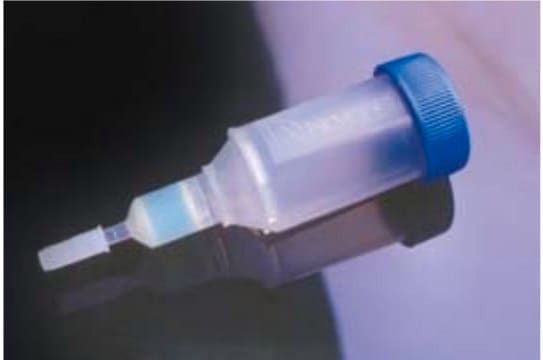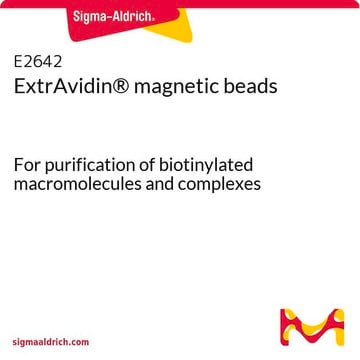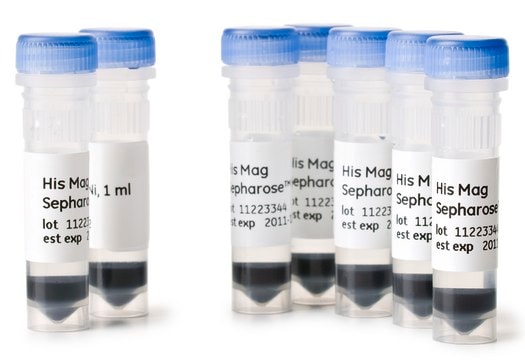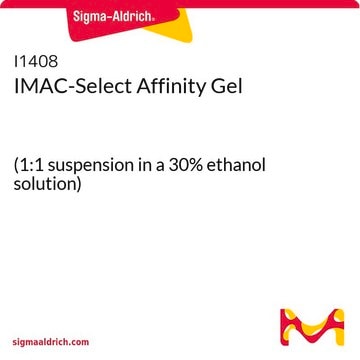H9914
HIS-Select® Nickel Magnetic Agarose Beads
Sinonimo/i:
nickel charged magnetic beaded agarose
About This Item
Prodotti consigliati
Coniugato
magnetic beads
Forma fisica
suspension
Durata
2 yr (Unopened product)
Matrice
6% beaded magnetic agarose
Capacità
≥15 mg/mL binding capacity
Temperatura di conservazione
2-8°C
Descrizione generale
Applicazioni
Stato fisico
Note legali
Prodotti correlati
Avvertenze
Danger
Indicazioni di pericolo
Consigli di prudenza
Classi di pericolo
Aquatic Chronic 3 - Carc. 1B - Flam. Liq. 3 - Repr. 1B - Skin Sens. 1 - STOT RE 2
Organi bersaglio
Respiratory Tract
Codice della classe di stoccaggio
3 - Flammable liquids
Classe di pericolosità dell'acqua (WGK)
WGK 3
Punto d’infiammabilità (°F)
86.0 °F
Punto d’infiammabilità (°C)
30 °C
Certificati d'analisi (COA)
Cerca il Certificati d'analisi (COA) digitando il numero di lotto/batch corrispondente. I numeri di lotto o di batch sono stampati sull'etichetta dei prodotti dopo la parola ‘Lotto’ o ‘Batch’.
Possiedi già questo prodotto?
I documenti relativi ai prodotti acquistati recentemente sono disponibili nell’Archivio dei documenti.
I clienti hanno visto anche
Contenuto correlato
Protein purification techniques, reagents, and protocols for purifying recombinant proteins using methods including, ion-exchange, size-exclusion, and protein affinity chromatography.
Tecniche, reagenti e protocolli per la purificazione di proteine ricombinanti mediante tecniche di cromatografia a scambio ionico, di esclusione dimensionale e di affinità.
Tecnologie per l’espressione di proteine ricombinanti in E. coli, cellule di insetti, di lieviti e di mammiferi per la ricerca di base e in supporto alla produzione di agenti terapici e di vaccini.
Protein expression technologies for various expression systems supporting research, therapeutics, and vaccine production.
Il team dei nostri ricercatori vanta grande esperienza in tutte le aree della ricerca quali Life Science, scienza dei materiali, sintesi chimica, cromatografia, discipline analitiche, ecc..
Contatta l'Assistenza Tecnica.












